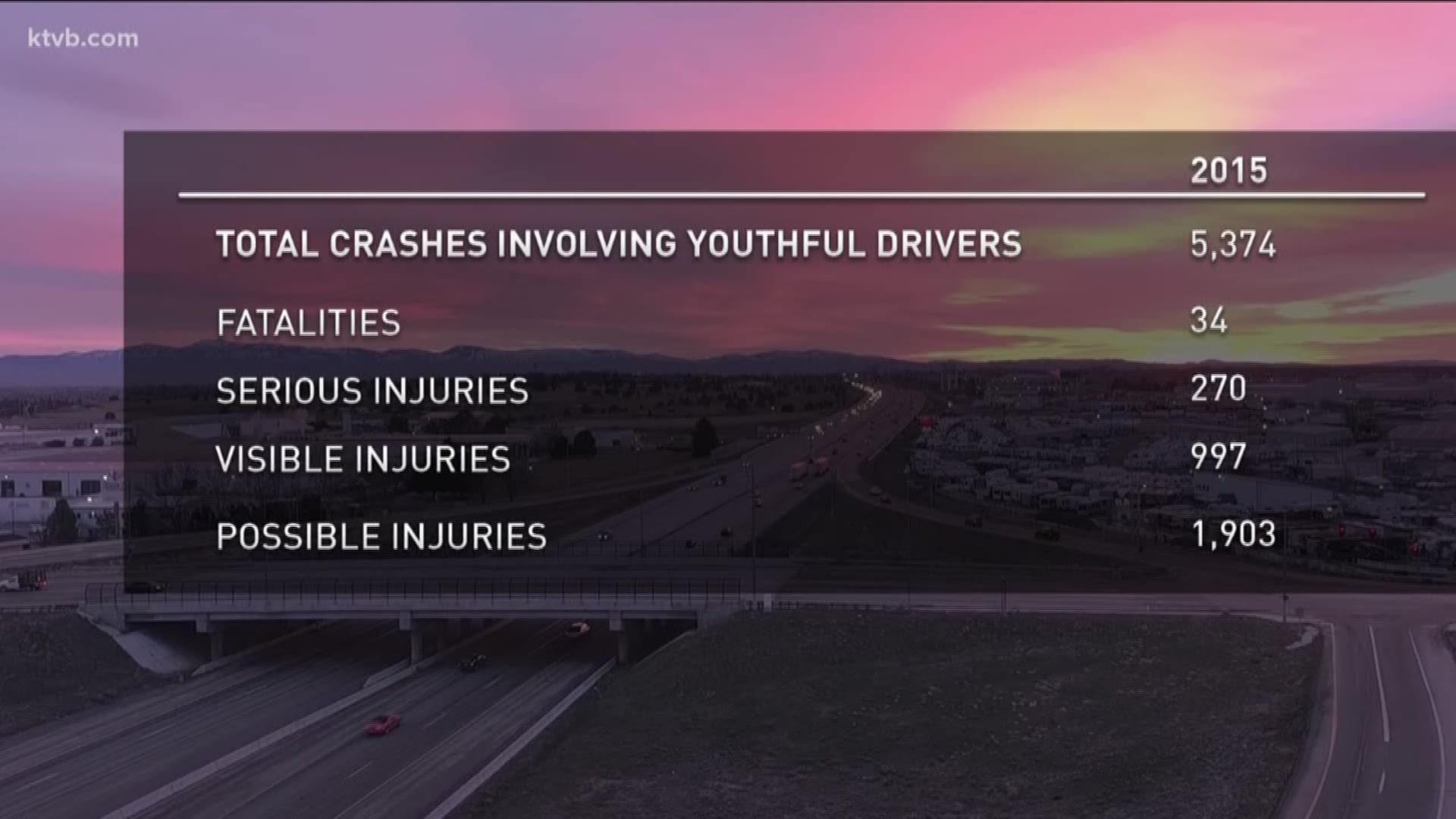BOISE -- Transportation officials are highlighting teen driver safety this week during a national movement that's urging parents and other adults to have conversations about safety.
Experts say it's also a time to help instill good behaviors in young drivers and encourage them to obey the rules of the road. Getting a driver's license is one of the biggest milestones and most exciting times in a teenager's life. But with that comes a huge responsibility - both for the teen and for parents.
Over the years, the number of crashes involving teens has slightly increased. Six percent of licensed drivers in Idaho are teenagers, but the most recent Idaho Transportation Department statistics show that 22 percent of all crashes involved young drivers.
On Nov. 30, 2016, then 16-year-old Ashtyn Walsh was driving home from school in Middleton.
"From my understanding, a Snapchat had come through and looking down at it caused her right tire to go off the side of the road," Ashtyn's aunt Kathy Grijalva said. "Startled her where she ended up overcorrecting and where she rolled several times, being ejected."
The two other passengers in the car - Ashtyn's cousin and best friend - survived. But Ashtyn did not.
"The loss of her has definitely left a hole in our heart that I don't know if it's ever really going to heal," Grijalva said.
Over the past year since Ashtyn's death, her family and friends have been promoting safe and engaged driving.
"If we can save one life where somebody is not going through what we have had to go through then it's all worth it," Grijalva added. "The more words we can get out there and awareness in terms of just no tweet, no text, no email, no snap, none of these notifications are worth it. Just put that phone down and get to where you're going and then look at it... It's not worth it. It really, truly can wait."
Ashtyn's family and friends' messaging is aligning with awareness the Idaho Office of Highway Safety is spreading. This week, in particular, being National Teen Driver Safety Week, officials are pushing social campaigns and statistics and encouraging people to collectively have crucial life-saving conversations with young drivers.
"They're inexperienced drivers, fresh behind the wheel. And frankly, traffic crashes are the number-one killer of our teens nationwide," Office of Highway Safety Outreach Program Manager Ken Corder told kTVB.
Whether it's a cellphone or food, we're constantly faced with distractions in our cars. And teenagers have less experience with those distractions while driving, so officials say in order to stay safe, they need to focus on the task at hand and just drive.
"Keep yourself engaged as a driver so that if there are distractions, they're not going to bother you and you're going to pay attention," Idaho Office of Highway Safety Program Manager Lisa Losness said. "No seat belts, aggressive driving, impaired driving, and now distractions. These kids have it tougher than ever."
But statistics show most teen crashes aren't caused by texting or other distractions; Losness says aggressive driving is the main cause of crashes.
Recent ITD numbers show that in 2015, drivers 15 to 19 years old were involved in 5,374 crashes, leading to 34 deaths of people of all ages. Of the 34 people killed in youthful driver crashes, 14 were the youthful drivers.
The same year, 12 percent of all drivers in fatal and serious injury crashes were drivers between 15 and 19 years old.
"It's not that it's any more prevalent now than it ever has been. But it hasn't gotten any better and that's part of the problem. We want it to get better, we want the fatalities to go down," Losness added.
There's so many rural roads in Idaho, which poses even more challenges to inexperienced drivers. The latest ITD numbers show while 71 percent of all crashes involving youthful drivers occurred in urban areas, 67 percent of the fatal crashes involving teens occurred in rural areas.
The Office of Highway Safety says this week is a time to bring the issue to the forefront at home, in class, at practice or at church, but they say it should be talked about all the time.
"We have really discussed with our safety partners statewide to have classroom conversations, to have conversations while they're at church, but really at home - that's where it starts," Corder said. "It can't be a one-time conversation. It needs to be ongoing."
Transportation officials are also advocating that teens and young adults take the free Alive at 25 class for ages 15-24.
"When teens graduate from that class they have better strategies to stay alive," Corder said.

